African Violets in Gritty Mix or 5:1:1
lathyrus_odoratus
14 years ago
Featured Answer
Comments (49)
justaguy2
14 years agolast modified: 9 years agodognapper2
14 years agolast modified: 9 years agoRelated Discussions
New seedlings not suitable for Gritty mix or 5:1:1?
Comments (30)Please be careful not to turn my words around. I said, "I don't think you understand nutrition and soil science well enough yet to make the judgements you're making", which is quite different than insinuating you don't know what you're doing. Just because event B follows event A, is not necessarily evidence that A is the cause of B. Evidence, because so many have started and transplanted seedlings into the gritty mix and the 5:1:1 mix, strongly supports the idea that you're doing something wrong or inconsistent with a favorable outcome using a well-aerated soil, and I can say the same thing for Buzzsaw. I would be telling you the same thing, whether you were using MG soil, your own mixture, or any other soil. I have no idea how you made the soil, but if it contains ingredients other than the ones listed, it's not one of the soils I recommended. You mentioned coffee grounds in the soil. Here is something I left only a few days ago on the soil/composting forum: Forum discussions frequently center on the question of adding dilute coffee/tea or grounds to plants as a 'tonic', but Arabica (coffee) and Camellia (tea) are known for their toxic alkaloid (caffeine) content and their allelopathic affect on plants as well as autotoxic (poison to their own seedlings) effects on future generations. Caffeine interferes with root development by impairing protein metabolism. This affects activity of an important bio-compound (PPO) and lignification (the process of becoming woody), crucial steps for root formation. We also know that the tannins in both coffee and tea are known allelopaths (growth inhibitors). There are ongoing experiments to develop herbicides using extracts from both coffee and tea that cause me to want to say they might serve better as a nonselective herbicide than as a tonic. I would not use either (stale coffee or tea) by applying directly to my plants - especially containerized plants; nor would I add tea bags/coffee grounds to my container soils. It's entirely possible you've compromised your plants ability to grow to their potential via your inclusion of the coffee grounds or one of the other extras you're using. Al Here is a link that might be useful: The thread I quoted from...See MoreLava Rock or Charcaol replace parts of Gritty or 5-1-1 mix?
Comments (10)Well the issue for me is that I have one system working really well...no problems, and another system that isn't working. For my AVs, I put them in domes when they are leaves and only have to water them every two weeks or so. They are VERY happy and I have no problems with this system. I changed a few of the pots to experiment with 5-1-1, I used Repti-bark. They molded really quickly, so I had to go back and re-pot all of them in 75% perlite, 25% miracle grow soil. They have no mold and look very happy. I've have never had mold issues before under domes. As for doming, I have had huge success with completely closed domes and know lots of growers that do really well with domes, even repairing unhappy plants by putting them in domes. I'm not sure WHY it's so successful, but I've had more problems with the plants grown and raised outside of the domed trays than in. My guess is that I'm using less water. My water is horrible because I had the same conditions in my previous city and had NONE of these problems. The reason I know that I have to change my system for my AVs out of domes is because they are staying very wet being wicked and also have fertilizer salts (although I haven't seen any more with the ones planted in bark and/or watered with distilled water, + allowed to dry out) Even though I've solved the fertilizer salt problem, I now have to figure out if the yellowing leaves and slow growth has to do with the lack of drainage as Al explains it, or PH, or nutrient deficiencies, or both! lol I'm already passed my budget on supplies, so I have to wait before I can get anything else, which means I'll be trying this mix that doesn't quite fit the standards of the "gritty mix". I'm still excited though because not having an organic medium means that I only have to worry about the nutrients and PH of the water...and I suppose the Perched Water Table possibly! but I have lots of tricks to get by that issue. I'll be doing A LOT of experimenting and recording my results, maybe it will be of help to y'all! and maybe one day when I have an extra room to fit huge amounts of gritty mix supplies I'll be trying the real thing! :) This post was edited by plantcrazed101 on Mon, Dec 9, 13 at 22:00...See More5-1-1 does this look ok to you?
Comments (6)Your soil looks like one of my batches did. I was told the particles should have been closer to the same size than I had. The plant I had in it was ok. I found some smaller rock at the dollar store of all places that comes in two sizes. One barely smaller than your rock, and one about half the size. It was not a problem for that plant, however I do believe the soils with more consistent sizes was better for how it behaved for me when watered. It's so challenging to get all those supplies, and I know how much time and effort it takes. It's great you are learning about Als recipes. I think most of us have had to settle for less than perfect supplies as it's difficult to find all the ingredients. Good job. Hope it goes great....See MoreFicus seems to be dying after root trim and repot in sorta 5-1-1
Comments (10)As far as too-dry roots, should I have just sprayed them more? Or should I have pruned less off the roots in the first place, and maybe kept some of the soil around them? They didn't have all that much mass, and I did wonder about that. My husband kept telling me, don't cut its roots! Even if you use a soil that allows you to use a much larger pot than you could use (effectively) when using a water-retentive medium, a ficus will usually colonize the soil to the degree the root/soil mass can be lifted from the pot intact - so it doesn't fall apart when you pull it from the pot. That's how I judge when a plant would benefit from a repot ..... but I'm using a high quality medium. I said that so I can say, if it's been more than a year in the same pot and the soil wasn't fully colonized by roots, there's something amiss. The plants might be reacting adversely to one or more of your soil's ingredients, or to how it's structured. In container media, that there is nothing phytotoxic (poison to plants) in the soil and how favorably (to the plant) the soil is structured are the most important considerations. It's not the soil's job to provide nutrition, that's your/our job. The soil's job is to provide a ratio of water to air that doesn't prove limiting to the plant, and it's better for the plant if you err on the side of more aeration than needed than more water than needed. The former is only limiting if you can't keep up with the plant's water needs. The later is a limitation any time you water appropriately - to beyond the point of saturation. This is a ficus repot of a F benjamina v "Too Little": After most of the soil has been removed: After all the root work was done. Note I kept only fine roots, the workhorses that do the lion's share of the heavy lifting: Repot completed - 90% of the top (branches and foliage) removed. It's pretty apparent I'm not too bashful about removing huge %s of roots, and the only trees I've ever tented were junipers of one species that I had grafted Shimpaku juniper (a variety of chinensis) branches to. I often tent hard to root cuttings, however. Even though conventional "wisdom" says you shouldn't prune the top of the plant to balance the volume of roots to shoots, those of us who collect trees in leaf from the wild or transplant/repot trees in leaf know it's foolish to think one size fits all. It's very often requisite that a significant fraction of the top be removed if the root system is weak or you judge it insufficient to support the top mass. After a few repots, you'll get better at making that judgment. The kitty litter contains *only* bentonite clay, and NOT clumping, NOT scented. Keeps its form when soaked, frozen, and thawed. OK, good. Was there a lot of dust in it? Fine bentonite forms a slippery, slimey paste that expands when it gets wet. I use it in Kokedama and in the dams that must be built to hold soil on top of tree plantings on flat stone slabs Al, I would feel very good about pruning. I don't see buds, but the tree-lets were in good shape and putting out new leaves before...before I tried to help them. Be patient. You can always take it off (branches) - harder to put it back on. Questions: --Are you talking about topping them above a branch? Just saying that's something you COULD do if you like - not a suggestion, just an observation. I do it all the time on very large plants. Another "story". Imagine how tall this tree was when I chopped it back. Does it look like a bonsai? No? Much better - right? No? this spring after repotting into training pot: Taken last Fri as it comes into leaf: Won't that get me two shoots/trunks at each cut, or a funny joint? No. The top branch becomes the new leader and the branch below it gets restrained. You'll prune it so it's growing horizontally. Changing a branch's position from vertical to horizontal also significantly changes the amount of energy that flows into that branch. The tree will always pay more attention to the branches growing vertically. Would I choose one branch, wire it up straighter, and remove the other? See what I just offered. Will that joint be strong enough? ;-) This is a tree in a put, you're not going to hang a tire swing off the branches or a chainfall so you can use it to hoist cars. It'll be fine. --Cut back a third in height? More? Whatever you like, but wait until the tree recovers. For now, just prune the branches. I can help guide you in that process. --If I take off the slender little twigs and actual branches that now go the wrong direction, will the trunk put out completely new growth from old wood? Yes. There are already dormant buds immediately distal to the point where every leaf that was ever on the tree was attached ...... and if that's not enough, the tree will form adventitious buds at random if it's healthy and really likes it's growing conditions. It seems like it might.... You're right. --Would it be better to repot it (them) into a different soil or is it too late? I don't have a good sense about what kind of job your soil will do. I'm not at all a fan of coir. Every experiment I ever did with it ended up with the plants in coir or CHCs faring nowhere as well as plants in pine bark and/or peat. Even in view of the fact I was using appropriate work-arounds for several of coir's shortcomings. This the soil mix I made today, which I could use tomorrow to repot. I was attempting to come *closer* to 5-1-1 but with some Turface added: There was no image. It would be great if you could come up with something that resembles one of these, or even a combination: [5 parts?] 3 cf Gro-well Soil Conditioner (composted forest product, sure looks like the composted pine fines photos to me...at least closer than coir???) [1 part?] 4 gallons Perlite [1/2 part?] 2 gallons of coir (peat moss substitute? ...feels similar to peat moss in texture...and that isn't very large proportion of it...) [1/2 part?] 2 gallons of MiracleGro Potting Mix (peat moss substitute) 2 C Osmocote 5 small handfuls of gypsum (~1/2 C?) [2 parts?] ~1 cf Turface MVP If you think you have a medium that drains reasonably well and will be adequately aerated if we get rid of the perched water, using ballast can make a very large difference by nearly eliminating all saturated soil with as very simple trick of science. This explains how it works. Al...See Moretapla (mid-Michigan, USDA z5b-6a)
14 years agolast modified: 9 years agolathyrus_odoratus
14 years agolast modified: 9 years agolathyrus_odoratus
14 years agolast modified: 9 years agolathyrus_odoratus
14 years agolast modified: 9 years agotapla (mid-Michigan, USDA z5b-6a)
14 years agolast modified: 9 years agojustaguy2
14 years agolast modified: 9 years agoshanielynn
14 years agolast modified: 9 years agolathyrus_odoratus
14 years agolast modified: 9 years agoshanielynn
14 years agolast modified: 9 years agolathyrus_odoratus
14 years agolast modified: 9 years agolathyrus_odoratus
14 years agolast modified: 9 years agoshanielynn
14 years agolast modified: 9 years agolathyrus_odoratus
14 years agolast modified: 9 years agoshanielynn
14 years agolast modified: 9 years agolathyrus_odoratus
14 years agolast modified: 9 years agoshanielynn
14 years agolast modified: 9 years agolathyrus_odoratus
14 years agolast modified: 9 years agoshanielynn
14 years agolast modified: 9 years agolathyrus_odoratus
14 years agolast modified: 9 years agoshanielynn
14 years agolast modified: 9 years agoshanielynn
14 years agolast modified: 9 years agolathyrus_odoratus
14 years agolast modified: 9 years agoMojaveLove
13 years agolast modified: 9 years agotapla (mid-Michigan, USDA z5b-6a)
13 years agolast modified: 9 years agoMojaveLove
13 years agolast modified: 9 years agojodik_gw
13 years agolast modified: 9 years agotapla (mid-Michigan, USDA z5b-6a)
13 years agolast modified: 9 years agobgtimber75
12 years agolast modified: 9 years agotapla (mid-Michigan, USDA z5b-6a)
12 years agolast modified: 9 years agoplantcrazed101
10 years agolast modified: 9 years agoStarlight Botanist
10 years agolast modified: 9 years agorooftopbklyn (zone 7a)
10 years agolast modified: 9 years agoplantcrazed101
10 years agolast modified: 9 years agolathyrus_odoratus
10 years agolast modified: 9 years agomelamalie
7 years agoplantcrazed101
7 years agolast modified: 7 years agomelamalie
7 years agotapla (mid-Michigan, USDA z5b-6a)
7 years agocaityross
7 years agoStarlight Botanist
7 years agolast modified: 7 years agotapla (mid-Michigan, USDA z5b-6a)
7 years agoEHH824
7 years agoplantcrazed101
7 years agolast modified: 7 years agomelamalie
7 years agolast modified: 7 years agotapla (mid-Michigan, USDA z5b-6a)
7 years agoplantcrazed101
7 years agolast modified: 7 years ago
Related Stories
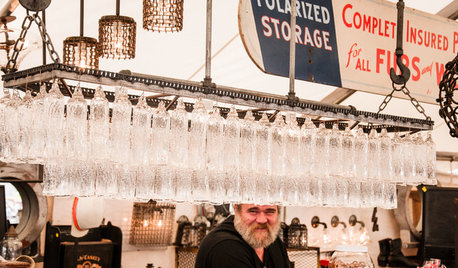
EVENTSTreasure Hunting at the Brimfield Antiques Fair
More than 5,000 antiques dealers are selling their goods along a 1-mile stretch of rural New England this week. Here's what we found
Full Story
KITCHEN DESIGNNew This Week: 2 Kitchens That Show How to Mix Materials
See how these kitchens combine textures, colors and materials into a harmonious whole
Full Story
PETS5 Finishes Pets and Kids Can’t Destroy — and 5 to Avoid
Save your sanity and your decorating budget by choosing materials and surfaces that can stand up to abuse
Full Story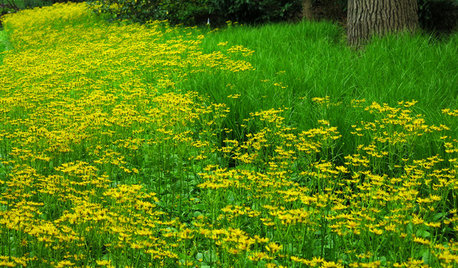
FALL GARDENING5 Native Early-Spring Bloomers to Plant This Fall
Think beyond tulips and daffodils this year with plants that you and native pollinators will love
Full Story
DECORATING GUIDES5 Ways Art Can Improve Your Room Design
Artwork can bring together the elements of a room by being a focal point, a color inspiration, a harmonizer and more
Full Story
GARDENING GUIDES5 Ways to Naturally Win the Weed War
Show irksome weeds no mercy with these tricks for combating them sans chemicals
Full Story
KITCHEN DESIGNKitchen Recipes: Secret Ingredients of 5 One-of-a-Kind Cooking Spaces
Learn what went into these cooks’ kitchens — and what comes out of them
Full Story
EVENTS5 Big Trends From This Week’s High Point Market
Learn the colors, textures and shapes that are creating a buzz in interior design at the market right now
Full Story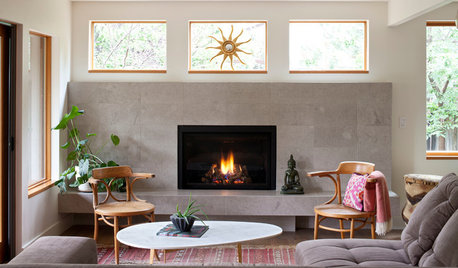
LIVING ROOMSNew This Week: 5 Living Rooms Designed Around the Fireplace
Overcome one of design’s top obstacles with tips and tricks from these living rooms uploaded recently to Houzz
Full Story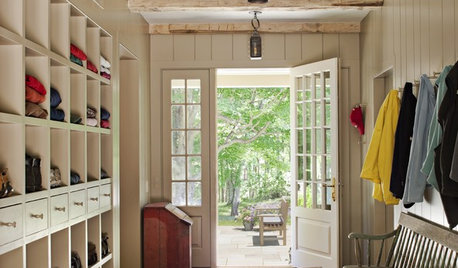
FARMHOUSESNew This Week: 5 Farmhouse-Style Entryways We Want to Come Home To
Raw materials and a sense of calm make these farmhouse- and cottage-style foyers both practical and inviting
Full Story






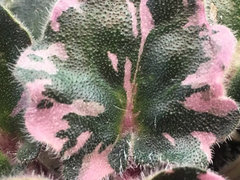

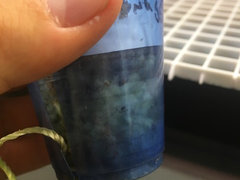


melamalie